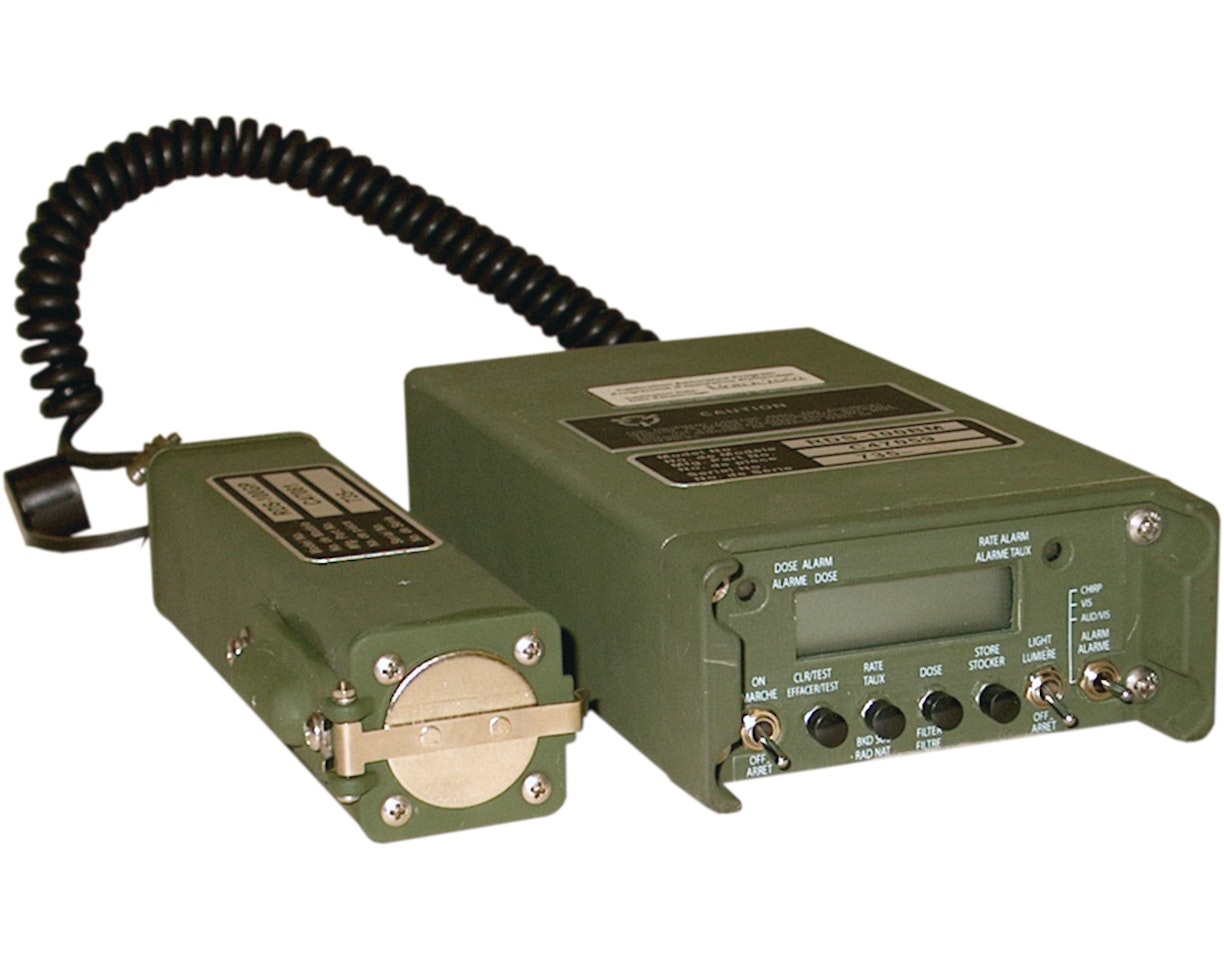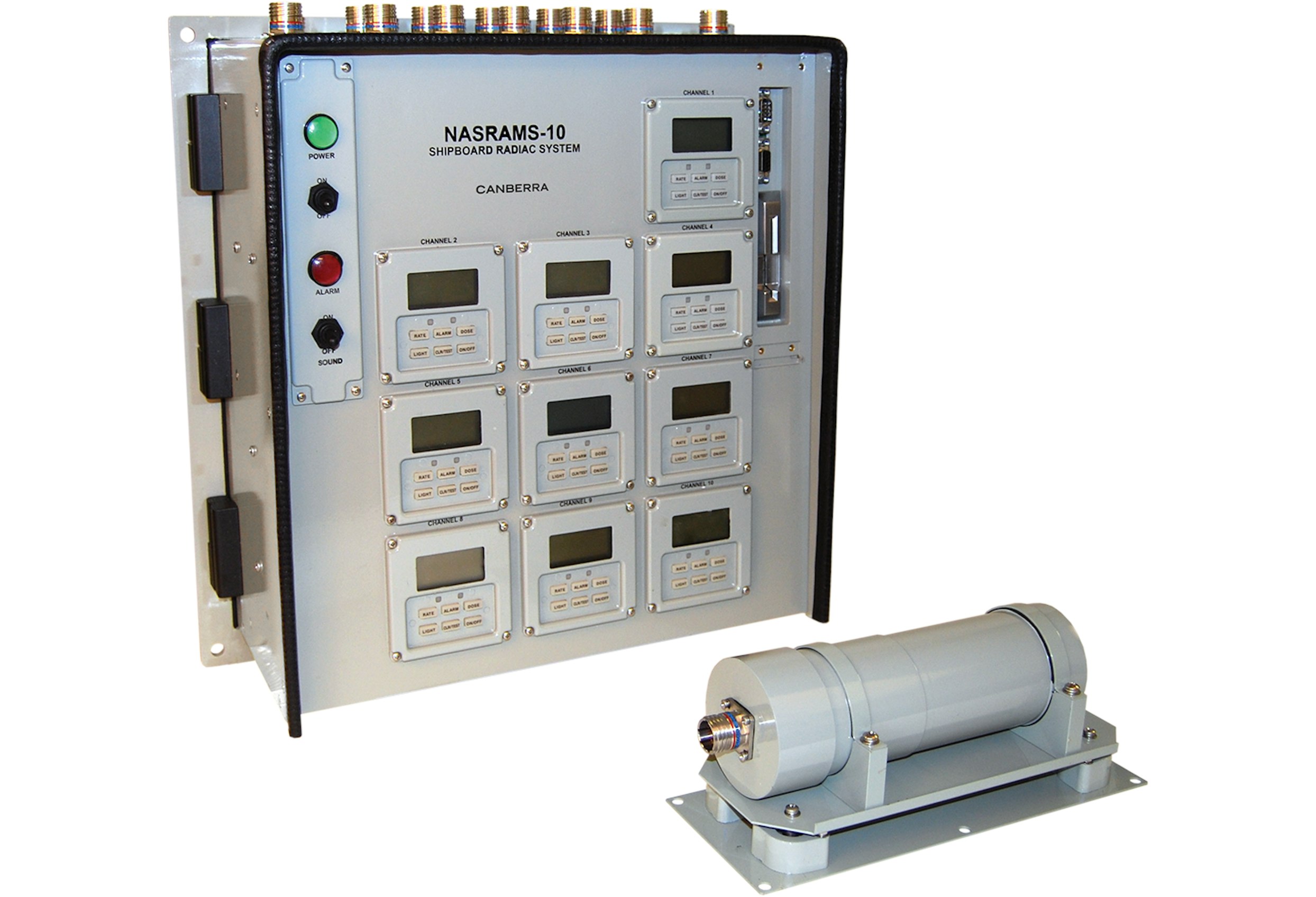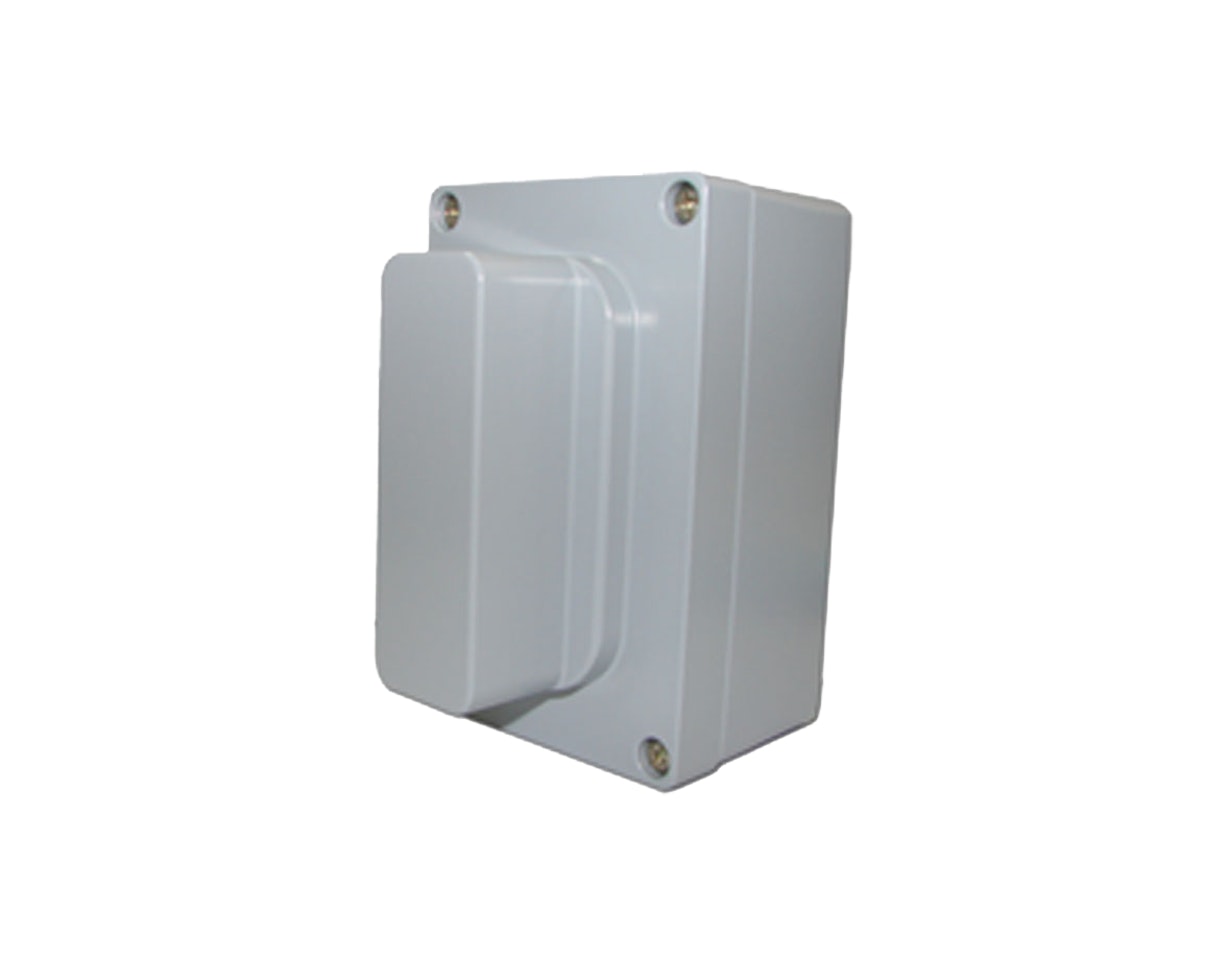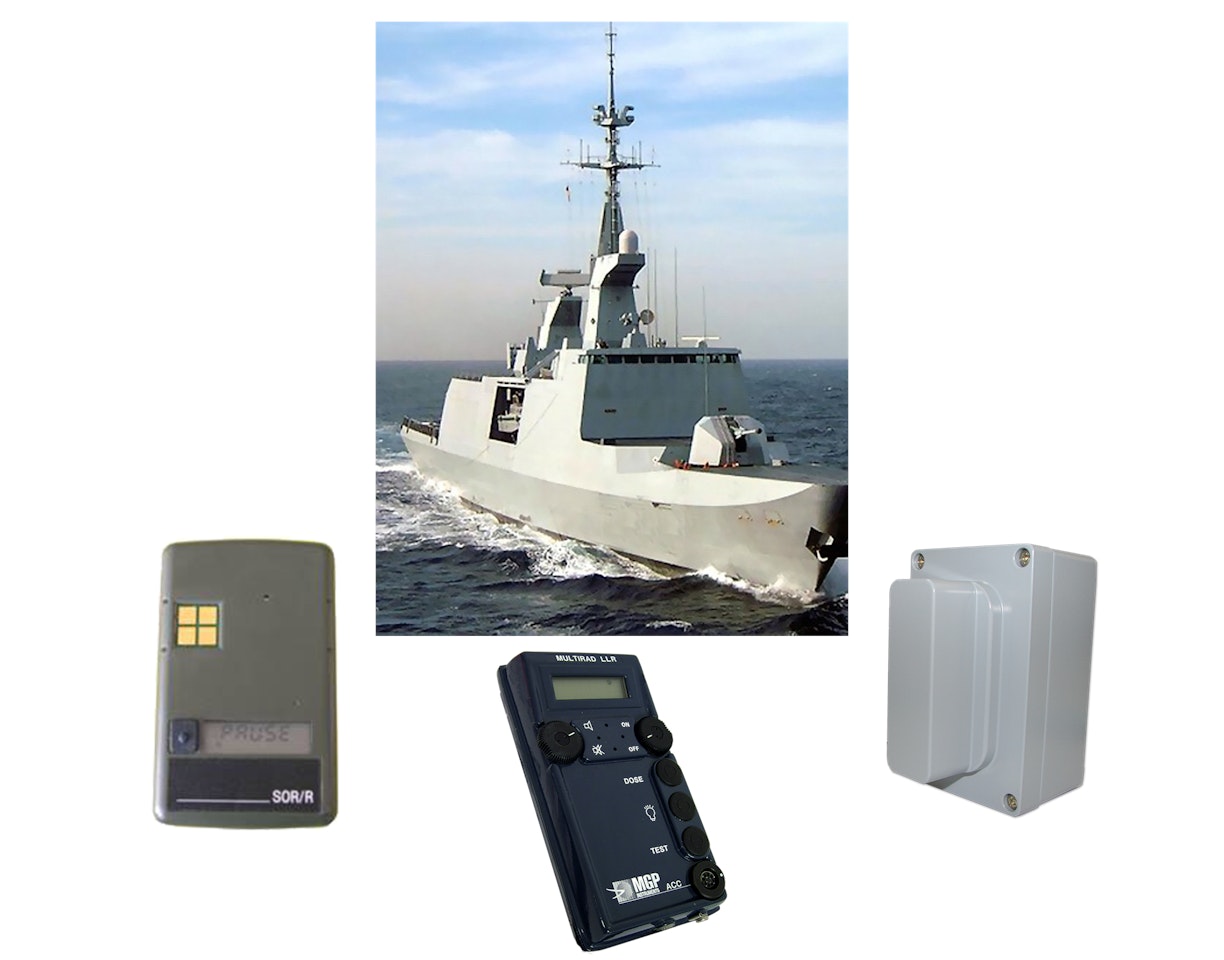Description
The NASRAMS system is a shipboard radiation monitoring system that provides continuous real-time radiological information on board military vessels/vehicles. It provides detection and measurement of prompt gamma and prompt neutron dose, along with residual gamma dose rates. A NASRAMS system is typically comprised of the following components:
- NASRAMS Main Indicating and Alarm Unit (Control Panel) – Provides centralized indication and alarm of all remote radiation detectors. A separate display module for each detector displays gamma dose rate at the detector location. This unit also includes a built-in controller used to conduct simulated radiation training exercises.
- Remote Radiological Detectors – Continuously detect and transfer data into the NASRAMS Control Panel concerning the presence and level of radiation. The typical NASRAMS system employs 10 detectors, though other configurations are available (consult sales representative for details).
Key Functionality of Main Indicating and Alarm Unit (Control Panel)
- Continuously displays dose rate and alarm status for each detector in use
- Provides total dose exposures for each channel by operator action (push button)
- Individual pre-settable alarms for both dose rate and total dose for each detector
- Alarms identified and indicated by specific channel and general alarm indicators (both visual and audible)
- Provides four hours of backup battery to power the system in case of a power outage
- Each display module within the Main Indicating and Alarm Unit has a backlight to facilitate use in a darkened room
- Splash-proof enclosure
- Built-in controller used to conduct simulated radiation training exercises
Key Features of Remote Radiological Detectors /Detector Probe Assemblies
- Detectors continuously detect and transfer data into the Main Indicating Unit about the presence and level of radiation
- Probe Assembly consists of two detectors, a high voltage power supply and electronic circuitry, all enclosed within a protective stainless steel canister and mounted to a platform
- Probe/platform assembly incorporates shock-absorbing mounts to stabilize against abrupt or potentially disruptive vibration
- Waterproof housing assembly unit
- Visual indicators of center location of the Low and High Range Gamma detectors aid in proper mounting/placement of detectors
Conduct of Radiological Test Exercises
Realistic training exercises are readily available with the NASRAMS system to insure competent and effective crew performance in the event of a radiological emergency. The programmable radiation simulation functionality includes time variable simulated radiation levels (including statistical fluctuation) such that the training exercise will accurately depict a real-life radiation environment. Exercises are uploaded to the Main Indicating and Alarm Unit by way of a Smart Card which is pre-programmed by the training officer using Simulation Editor Software. The start and finish time of the exercise, as well as the radiation readings as a function of time can all be pre-selected by the Training Officer to reflect almost any type of residual radiation event.
Reliability and Maintainability
The NASRAMS system reflects a high level of reliability and ease of maintenance. This is required in order to keep the life cycle cost of the equipment at a low level and more important, to ensure that the system is capable of performing its intended function 99.99% of the time. A NASRAMS system is derived from the military qualified AN/UDR-13™, AN/UDR-14™, AN/UDR-15™ Radiac Sets (Pocket Radiacs) that were developed by Aptec-NRC, now Mirion, under contract to the US Army. A range of testing documentation for the NASRAMS system is also available to confirm suitability for military use.
Key Benefits
- Provides continuous real-time radiological information with a centralized readout for informed decision-making
- High degree of reliability
- Easy to maintain
- Programmable radiation simulator for realistic training exercises
Applications
- Military vessels/vehicles




